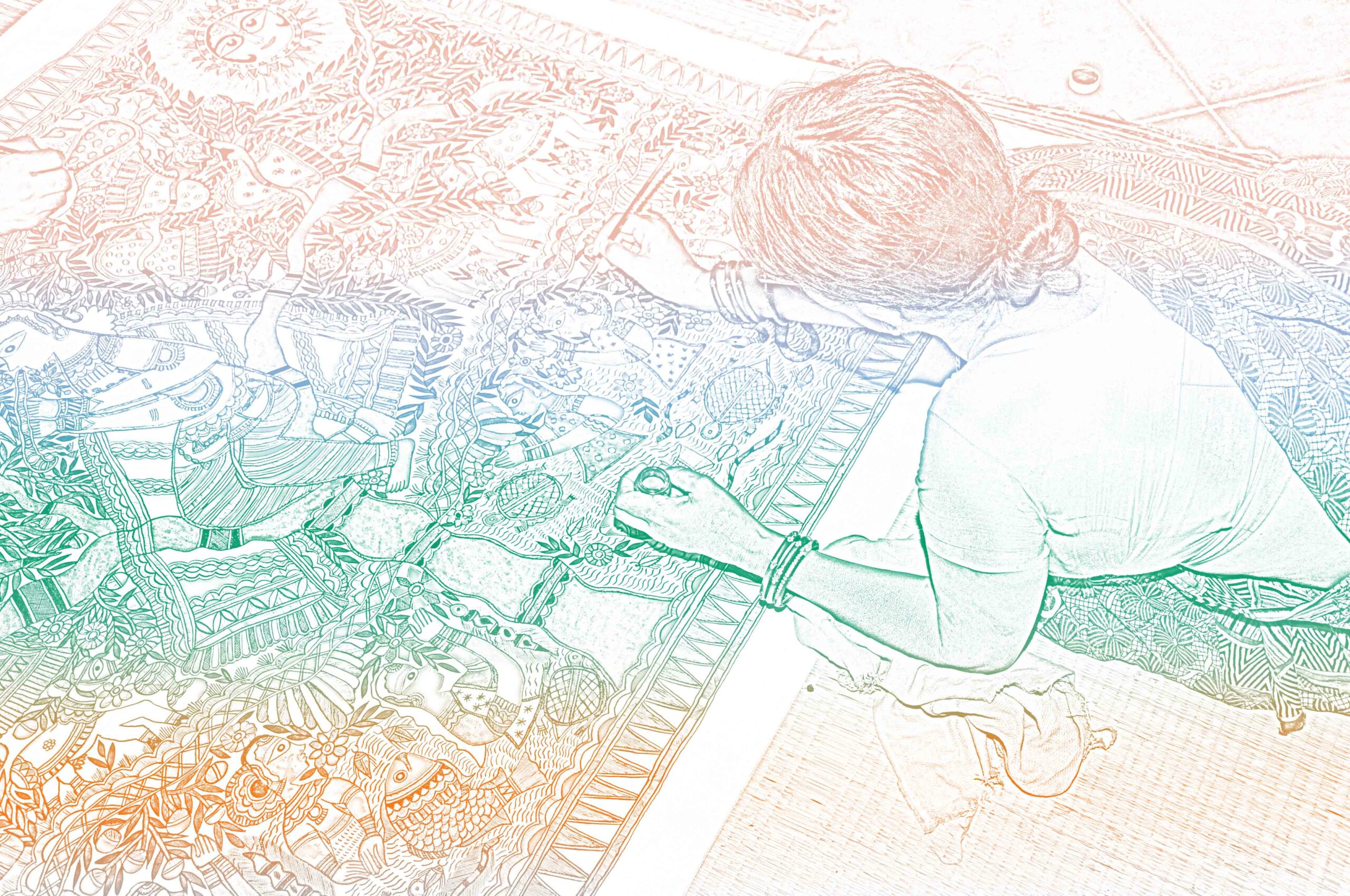The beautiful and glowing art of the 17th Century is still very popular and appreciated by the masses, as well as art enthusiasts. This style celebrates the rich culture of India.

The Pious Art: Tanjore Art
The origin and inspiration of Tanjore Art can be traced back to 17th century during the reign of the Vijaynagara Rayas. The complete culmination of this Art form into its original and popular form came into origin during the late 17th Century under the Maratha rule. It shows influences and inspiration from Nayakas as well.
Filled with Glow and Gold
The paintings of Tanjore Art style are extremely elaborate and can be identified by the most distinct and rich Gold Coating.
One of the most defining feature of Tanjore Art and all its different forms is the distinct aura of a rich display of unique and extensive Gesso work and precious gemstones. These elements add a layer of elegance and opulence to every piece. Tanjore paintings are made more unique and beautiful with the use of rare stones.
The style and content of the Tanjore Art is extremely diverse and enriched with the culture of India. Different cultures inspired this art form from Telugu to European to Chinese and many more.
Origin and Legacy
Post the Chola period, this art form got respect during the rule of East India Company. The artists engaged in Tanjore Art were patronized by the colonial rulers as well as colonialists from Portugal. With the increasing interest of the colonial rulers and European people in the culture of India, the Tanjore paintings also got a new addition and a different spin in the content and styles that were created. The paintings and themes of this Art form were tweaked and created for the taste and demands of the colonialists who resided in the country.
One of the most important differences between the traditional and Indo-European Tanjore Paintings created by the same artists was the lack of gold leaf in the Indo-European style.
Caters to special occasions
Since its inception, the Tanjore art and paintings were created in all kinds of sizes at the behest and choice of the patron. Beautiful and bold colors were used for creating paintings of deities and every god worshiped during this period.
The most popular pieces depict different gods worshipped by the masses during this period. The art forms were created on several bases from walls to canvas to panels to mica to ivory and many more.
The glass paintings of Tanjore Art form were inspired by a Chinese art form. Most of these glass paintings depicted different Gods, Deities as well as Nobility and Rulers like Raja Sarabhoji. The artists added colors which were made from naturally available products like vegetable dye. Currently the medium of colors has shifted to artificial origin but the technique and style of Tanjore paintings which are authentic in origin remains the same.
Everlasting and Growing Charm
Since the medieval era the Raju community of Thanjavur have been involved in the occupation of Tanjore paintings. The Nayudu community also forms a significant part of this community of artists who have excelled in creating these masterpieces since its origin.
The community considers the creation of these pieces as sacred and should be taken up with extreme humbleness and certain rituals which ensure the pious nature of these paintings irrespective of who ordered for the piece and whatever might be their demand.
Tanjore Paintings or Thanjavur Paintings were recognized by the Government of India in 2007 with a Geographical Indication which signifies its historical uniqueness. This recognition is official as well as international in nature as it traces the origin of every Tanjore painting or Tanjore Art pieces across the world to the art form that originated in Thanjavur. This tag of recognition gives the Tanjore artists international recognition and respect across the world that they deserve.